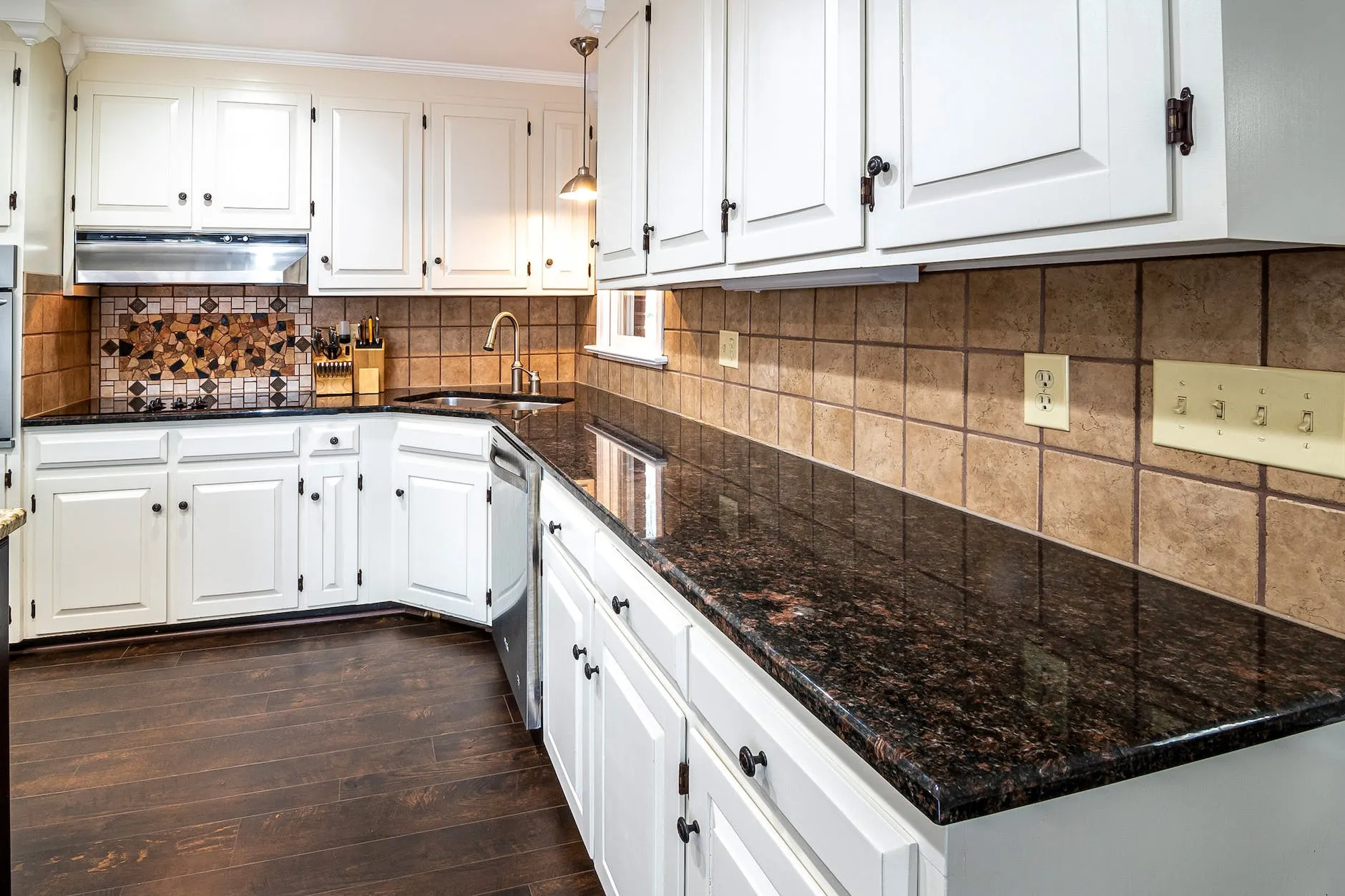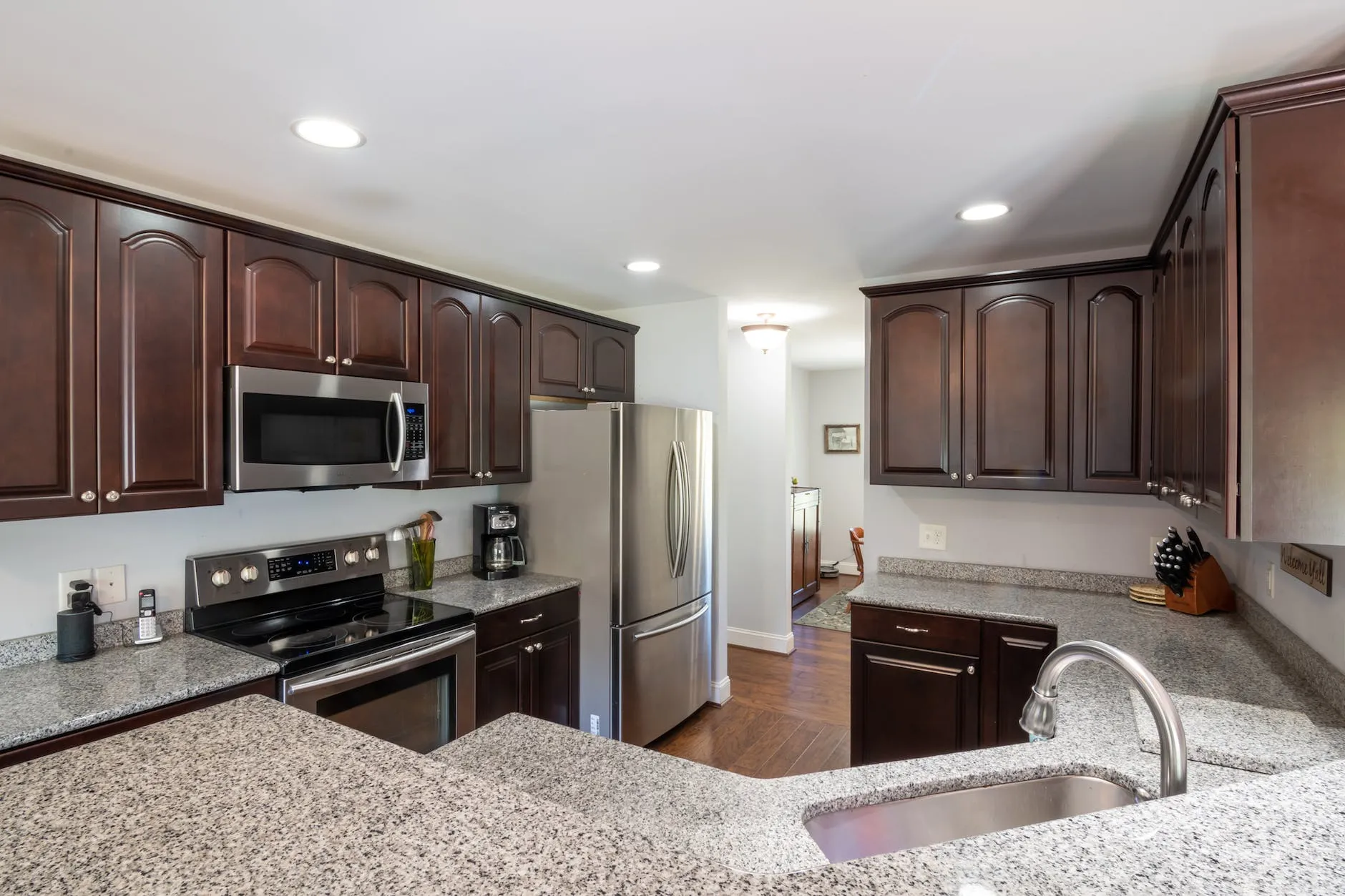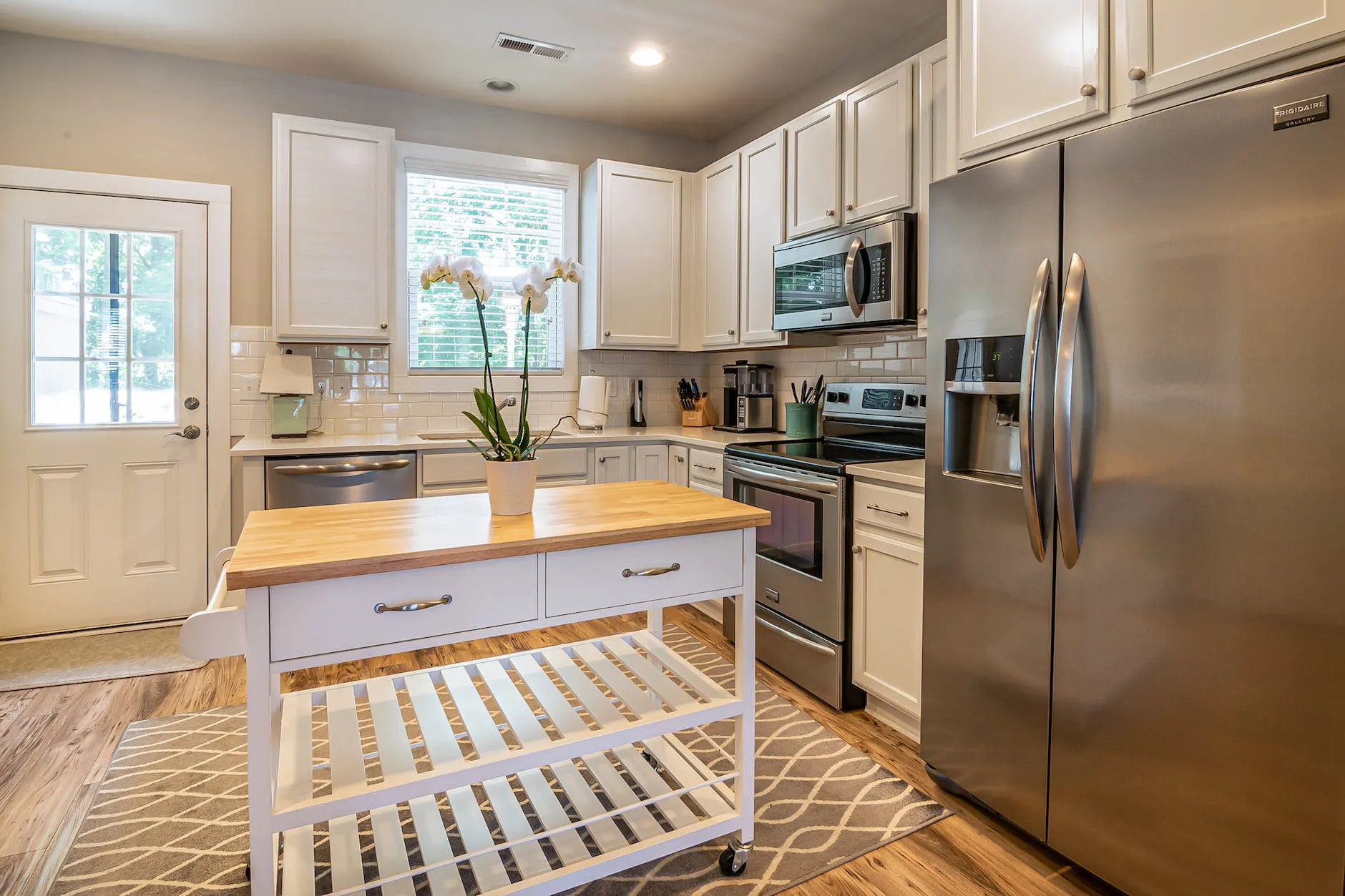Kitchen cabinets are one of the most important features of any kitchen, providing both beauty and functionality. However, if they aren’t securely attached to the wall, they can become a liability—especially when filled with heavy items. You don’t want your cabinets to come crashing down on you or your family!
This article will teach you how to securely attach kitchen cabinets to the wall so they will stay in place for many years. By following these instructions, you’ll learn how kitchen cabinets are attached to the wall and ensure that your kitchen remains safe and functional for generations to come.
How Are Kitchen Cabinets Attached to The Wall?
There are a few different ways to attach kitchen cabinets to the wall. The most common method is to use screws and brackets.
First, you must find the studs in the wall using a stud finder. Then, mark where the cabinets will be attached with a pencil. Next, predrill holes through the cabinet and into the studs. Finally, screw the cabinets to the wall using 2–3-inch screws.
Another option is to use adhesive strips or glue. This method is not as secure as screwing them into the studs, but it may be sufficient depending on the weight of your cabinets.

How Are Kitchen Cabinets Attached To The Floor?
There are usually two ways kitchen cabinets are attached to the floor: either by screws or by brackets. If your cabinets are screwed into the floor, you will need to remove the screws and brackets to detach the cabinets from the floor. If your cabinets are attached with brackets, then you will need to remove the brackets in order to detach the cabinets.
How Are Kitchen Cabinets Attached To Each Other?
There are a few different ways that kitchen cabinets can be attached, depending on the type of cabinet and the style of your kitchen. The most common way to attach cabinets is with screws and brackets, which will provide a very strong hold. You can also use adhesive strips or special clips designed to attach cabinets together. If you are unsure how to best attach your cabinets together, you can consult a professional contractor or cabinetmaker.
How To Install Wall Cabinets Without Studs?
If you’re looking to install wall cabinets without studs, you can use a few different methods. The first is to use drywall anchors. Drywall anchors are small metal or plastic sleeves that expand when you screw them into the drywall. This provides a secure hold for your cabinets, even if there aren’t any studs behind the drywall.
Another option is to use toggle bolts. These are great for heavier cabinets since they can support up to 50 pounds per bolt. Toggle bolts are also made of metal or plastic, but instead of expanding, they have a toggle mechanism that locks them into place once they’re inserted through a hole in the wall.
Finally, you can also use screws and washers to secure your cabinets without studs. Just drill pilot holes through the cabinet and into the drywall, then screw in long screws with washers attached. This method isn’t as secure as using anchors or toggle bolts, but it’s still strong enough to hold most cabinets in place.
How To Install Upper Cabinets Away from The Wall?
If you’re installing upper cabinets away from the wall, you’ll need to use supports to make sure they’re properly secured. The most common type of support is a bracket, which can be screwed into the wall and attached to the cabinet.
Another option is to use L-brackets, which can be attached to both the wall and the cabinet. Whichever type of support you choose, make sure it’s rated for the weight of your cabinets.
To install brackets or L-brackets, start by holding the support in place against the back of the cabinet. Then use a drill to drive screws through the support and into the wall studs. If you’re using L-brackets, also drive screws through the bracket and into the side of the cabinet. Once all the brackets or L-brackets are in place, check their level before moving on.

What You’ll Need to Attach Kitchen Cabinets Securely?
To securely attach kitchen cabinets to the wall, you will need the following materials:
- 1/2″ plywood or particle board
- Construction adhesive
- Cabinet screws
- Wall studs
- Shims
- Level
First, you need to cut the plywood or particle board to fit smoothly against the cabinets’ bottom. Next, spread construction adhesive on the back of the plywood or particle board, and position it against the wall. Then, use cabinet screws to attach the plywood or particle board to the wall studs. Finally, shim around the edges of the plywood or particle board to level it out.
Step-By-Step Guide to Securing Kitchen Cabinets to The Wall
- Before you start, ensure your kitchen cabinets are the right size and fit for your space. If they’re too big or small, they won’t be secure.
- Once you’ve confirmed the cabinets are the right size, use a stud finder to locate the studs in your wall. This will be where you’ll attach the screws to secure the cabinets.
- Mark the location of the studs on the cabinet so you know where to drill.
- Drill pilot holes into the cabinet at each mark. These should be slightly smaller than the screws you’ll be using to secure the cabinet.
- Line up the cabinet against the wall and insert screws into each pilot hole. Screw them in until they’re tight, but be careful not to over-tighten them, as this could damage the cabinet or strip the screws.
- Repeat these steps for each cabinet you need to secure to the wall.
Safety Precautions
When it comes to kitchen cabinets, one of the most important aspects to consider is how to attach them to the wall securely. This is especially important if you have young children in the home, as they can easily pull down poorly secured cabinets.
You can secure your kitchen cabinets to the wall in a few different ways. One option is to use brackets. You can find these at most hardware stores, allowing you to screw the cabinet into the wall without having to drill any holes. Another option is to use adhesive strips. These are very easy to install and will hold the cabinet in place without damaging the wall.
Whichever method you choose, make sure that you follow the instructions carefully and that you test the stability of the attachment before putting away any dishes or other items in the cabinet.
Tips and Tricks for Making a Secure Attachment
- Use screws, not nails, to attach the cabinets to the wall. Screws provide a more secure connection and are less likely to come loose over time.
- Use wall anchors if you are attaching the cabinets to drywall. Wall anchors help distribute the weight of the cabinets and prevent the drywall from cracking under strain.
- Use a level when attaching the cabinets to ensure that they are evenly hung on the wall. This will give your kitchen a neater appearance and make it easier to use the countertops.
- Make sure that all screws and nails are driven into solid wood studs in the wall for maximum strength. Avoid attaching cabinets to hollow walls or plasterboard where they will not be as securely attached.
Alternatives to Traditional Attachment Methods
There are several alternatives to the traditional methods of attaching kitchen cabinets to the wall. These include:
- Glue: Applying a strong adhesive to the back of the cabinets and then pressing them firmly into place is an effective way to secure them. This method is particularly useful if the cabinets are installed on uneven surfaces.
- Screws: Screwing the cabinets into place is another option. This method provides a more permanent attachment than glue, but it can be more difficult to remove the cabinets if they need to be replaced or repaired in the future.
- Straps: Attaching straps or brackets to the back of the cabinets and then securing them to the wall with screws provides a very strong attachment. This method is often used in commercial kitchens where heavy-duty equipment is used.
- Magnetic Strips: Magnetic strips can be attached to both the back of the cabinets and the wall, providing a strong hold without damaging either surface. This is a good option for renters who cannot make holes in their walls.
Conclusion
Securing your kitchen cabinets is necessary to create a safe and stable kitchen area. With the right tools and techniques, you can attach your cabinets securely without any hassle. When it comes to attaching kitchen cabinets, accuracy and precision are key to achieving success. Follow these steps carefully, double-check your measurements, and you’ll have no problem installing them safely!
Frequently Asked Questions:
How do you secure kitchen cabinets to the wall?
There are a few different ways to secure kitchen cabinets to the wall, depending on the type of cabinet and the type of wall. For cabinets with a lip on the back, you can use screws or nails to secure them to the wall studs. For cabinets that sit flush against the wall, you can use brackets or clips that attach to the sides of the cabinet and screw into the wall. You may also need to use screws or nails to secure the brackets or clips themselves. Be sure to follow all manufacturer instructions when attaching any type of cabinet to the wall.
How do you anchor a cabinet to the wall?
Before you start attaching your cabinets to the wall, it’s important to find the studs first. Use a stud finder to help you locate them, and then mark their position with a pencil. Once you’ve found the studs, you can begin attaching your cabinets. For added stability, you can also use wall anchors. First, drill a hole into the cabinet where you’ll place the anchor. Next, insert the anchor into the hole and screw it into place. Finally, use a screw to attach the cabinet to the wall anchor. With both screws and wall anchors in place, your cabinets should be securely attached to the wall.
How are lower kitchen cabinets attached to the wall?
There are three ways to attach lower kitchen cabinets to the wall: face-frame, frameless, and European-style. Face-frame cabinets have a frame that is usually made of wood or metal and attached to the wall with screws or nails. Frameless cabinets are attached directly to the cabinet box, and the box is attached to the wall with screws or nails. European-style cabinets have a frame around the door, but the frame is not attached to the cabinet box.
How are kitchen wall cabinets hung?
In order to securely attach kitchen cabinets to the wall, you will need to use screws and wall plugs. Wall plugs should be used in both studs and drywall. The size of the screw will depend on the thickness of the cabinet. It is important to make sure that the screws are long enough to go through the cabinet and into the wall studs.
